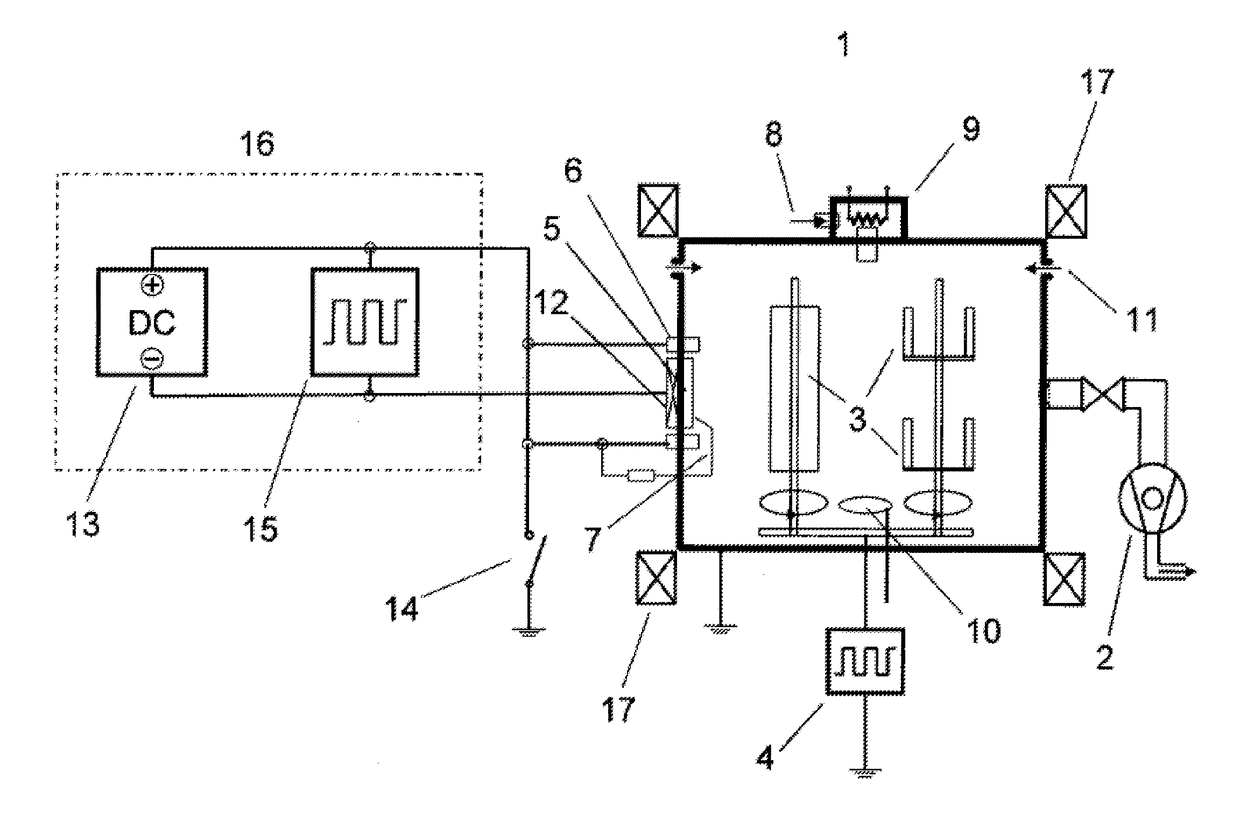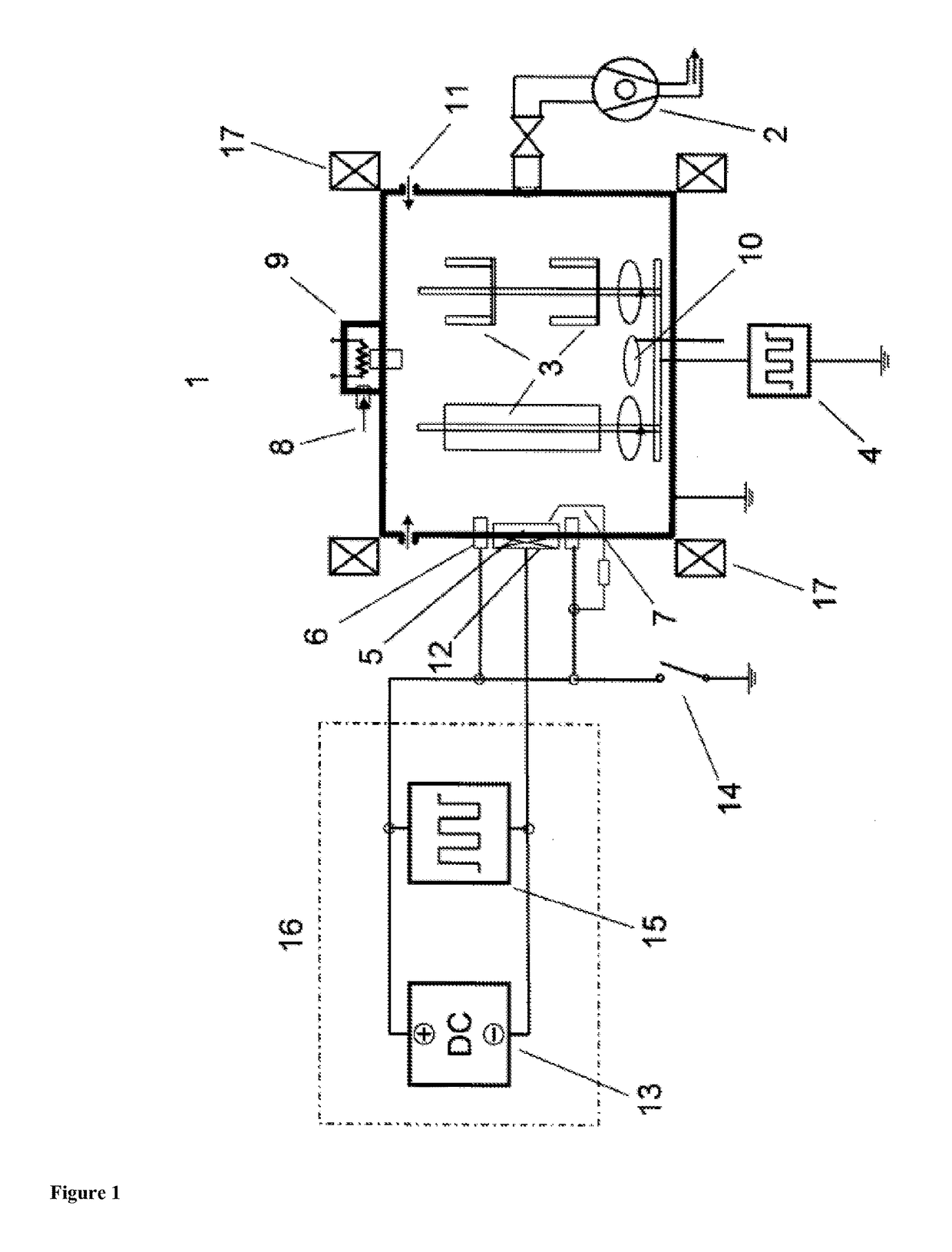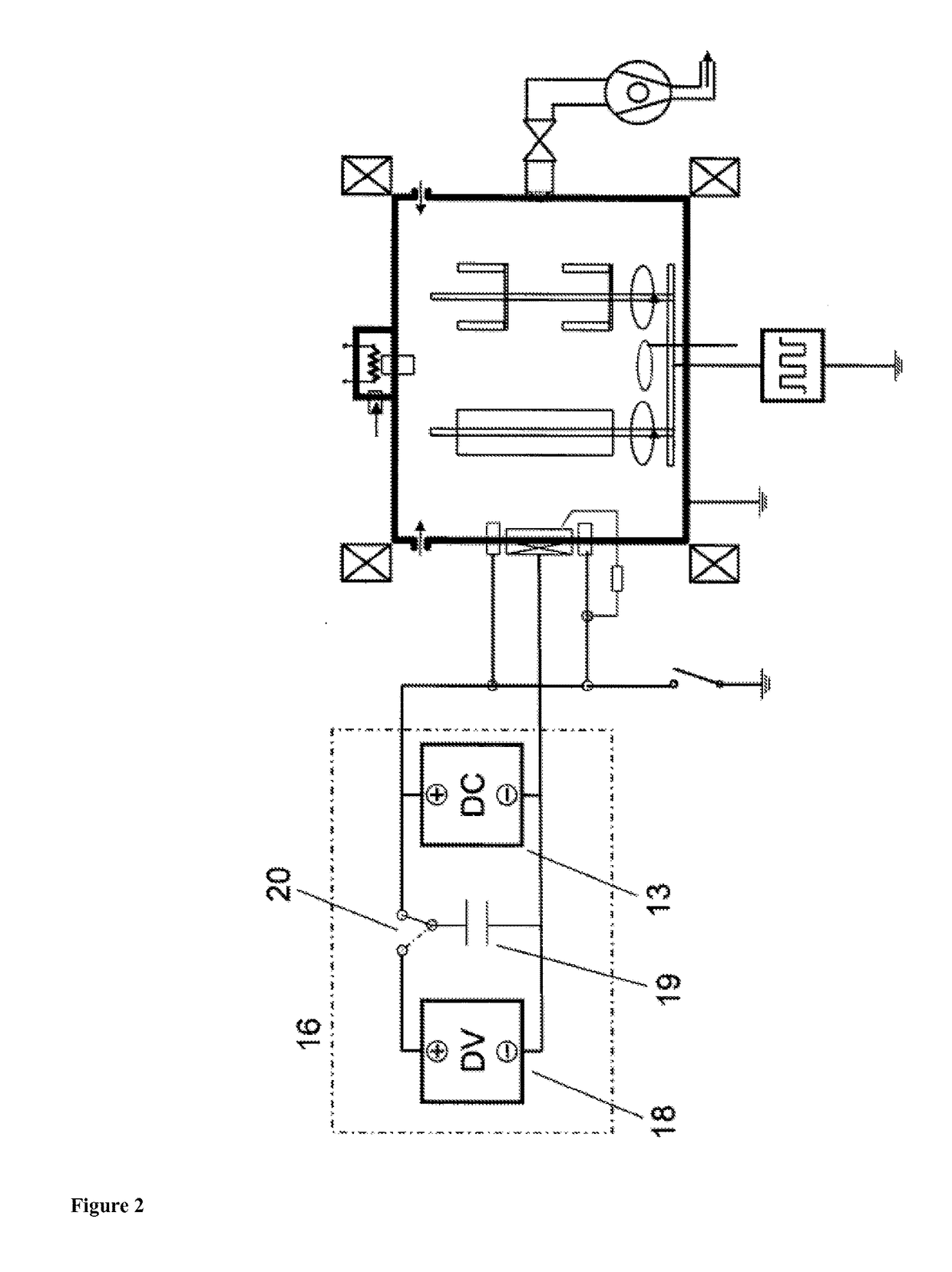Method for depositing electrically insulating layers
a technology of electrical insulation and layer, which is applied in the direction of plasma technique, vacuum evaporation coating, coating, etc., can solve the problems of constant discharge voltage, unstable discharge voltage, and breakdown
- Summary
- Abstract
- Description
- Claims
- Application Information
AI Technical Summary
Benefits of technology
Problems solved by technology
Method used
Image
Examples
Embodiment Construction
[0006]It is the objective of this invention to introduce a method that avoids the above-mentioned shortcomings of prior art while making it possible to combine the advantages of the high ionization rate of a spark discharge with the advantage of an augmented discharge voltage without exposing the spark cathode, in particular the surface of the spark cathode, to a thermal overload. The invention achieves this objective through the characterizing features specified in claim 1.
[0007]Accordingly, an electric spark discharge is ignited and maintained on a target surface and is simultaneously operated with a direct current and a relatively low constant voltage from a power supply. At the same time, a pulsed current generated by a periodically applied voltage signal is introduced, with the shape of the voltage signal being in essence arbitrarily selectable.
[0008]Basically, there are different ways in which the spark current can be pulsed, thus increasing the spark discharge voltage.
[0009]U...
PUM
| Property | Measurement | Unit |
|---|---|---|
| frequency | aaaaa | aaaaa |
| frequency | aaaaa | aaaaa |
| frequency | aaaaa | aaaaa |
Abstract
Description
Claims
Application Information
 Login to View More
Login to View More - R&D
- Intellectual Property
- Life Sciences
- Materials
- Tech Scout
- Unparalleled Data Quality
- Higher Quality Content
- 60% Fewer Hallucinations
Browse by: Latest US Patents, China's latest patents, Technical Efficacy Thesaurus, Application Domain, Technology Topic, Popular Technical Reports.
© 2025 PatSnap. All rights reserved.Legal|Privacy policy|Modern Slavery Act Transparency Statement|Sitemap|About US| Contact US: help@patsnap.com



